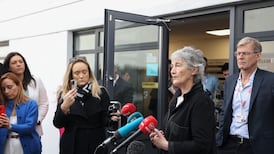The Taliban drove an ambulance packed with explosives into a crowded Kabul street in Afghanistan on Saturday, setting off an enormous blast that killed 95 people and injured 158 others.
The attack came days after a 15-hour siege by militants at the Intercontinental Hotel in Kabul that left 22 dead, including 14 foreigners.
On Saturday, hospitals overflowed with the wounded, and forensic workers at the morgue struggled to identify the dead.
The casualties were another reminder of how badly Afghanistan is bleeding. Over the past year about 10,000 of the country’s security forces have been killed and more than 16,000 others wounded, according to a senior Afghan government official. The Taliban losses are believed to be about the same.
About 10 civilians were killed every day on average over the first nine months of 2017, UN figures suggest.
The surge in violence across the country – particularly deadly attacks that have shut down large parts of Afghan cities – comes as the government is in disarray. President Ashraf Ghani has struggled to build consensus, and has recently found himself in a protracted showdown with a regional strongman, a dispute that has taken up much of the administration's energy.
The strongman, Atta Muhammad Noor, a powerful governor, was fired by the president, but has refused to leave his post, raising fears that escalating political tensions could further undermine the country’s fragile security.
The recent carnage is also tied, analysts said, to President Donald Trump's decision last month to increase pressure on Pakistan, long seen as supporting the Taliban as a proxy force in Afghanistan. Mr Trump made a gamble to try to tilt the war in Afghanistan toward a resolution, holding back security aid to Pakistan for what he called the country's "lies and deceit".
Retaliation
At the time of the announcement many Afghan officials feared an immediate escalation in violence in retaliation and wondered whether their shaky government could absorb the blows.
On Saturday, Mr Trump issued a statement denouncing the attack. “I condemn the despicable car bombing attack in Kabul today that has left scores of innocent civilians dead and hundreds injured. The Taliban’s cruelty will not prevail.
"The United States is committed to a secure Afghanistan that is free from terrorists who would target Americans, our allies, and anyone who does not share their wicked ideology."
In last weekend's attack Taliban militants barged into the highly-guarded Intercontinental Hotel, battling security forces in an hours-long siege. At least 14 of their victims were foreign citizens, including Americans, and nine were pilots and flight crew members from Ukraine and Venezuela who worked for a private Afghan airline Kam Air.
At the time of Saturday's attack Gen Joseph L Votel, commander of the US central command, which oversees military operations in the region, was in Kabul. He met with President Ghani, and officials aware of the discussion said Pakistan was much of the focus.
Security lapses
Anger at the Afghan government for its dysfunction and ineffectiveness in the face of violence was palpable on the streets. At the site of the explosion an old man, his clothes stained with blood, sat on the ground and wailed. He cursed the two leaders of the Afghan government, President Ghani and his coalition partner Abdullah Abdullah, for the security lapses. He said his son was dead.
“May God punish you, may Allah punish you both,” the old man repeated. “There is nothing left for me anymore. Come kill me and my family, too.”
Saturday’s explosion occurred on a guarded street that leads to an old interior ministry building and several embassies. Many ministry departments still have offices there, and visitors line up every day for routine business.
“I saw a flame that blinded my eyes, then I went unconscious,” said Nazeer Ahmad (45), who suffered a head wound. “When I opened my eyes I saw bodies lying on the ground.”
"It's a massacre," said Dejan Panic, co-ordinator in Afghanistan for the Italian aid group Emergency, which runs a nearby trauma centre. At least 131 people were brought to the group's Kabul hospital.
First checkpoint
Baseer Mujahid, a spokesman for the Kabul police, said the bomber drove past a first checkpoint, at the entrance to the street. Police had allowed it to pass because it was an ambulance, and one of the city's main hospitals was just beyond the checkpoint.
“Police stopped the vehicle at the second checkpoint,” Mujahid said. “Then he tried to drive in from the wrong lane. Again, the police tried to stop him. But he detonated the explosive-laden vehicle.”
Tadamichi Yamamoto, chief of the UN mission in Afghanistan, condemned the attack as "nothing short of an atrocity", and called for the perpetrators to be brought to justice.
“I am particularly disturbed by credible reports that the attackers used a vehicle painted to look like an ambulance, including bearing the distinctive medical emblem, in clear violation of international humanitarian law,” Yamamoto said. – New York Times service










